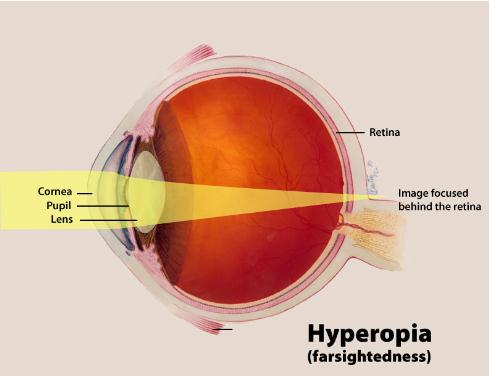Contrary to what the name implies, a person who is long-sighted has blurred vision when looking at close objects, unless they make a constant effort to focus, which can lead to strain, headaches, and eye fatigue.

What is Long-sightedness (Hyperopia)?
Long-sightedness or hyperopia happens when the eye is shorter than normal. This shape causes images to be focused behind the retina, rather than on it. It is a common condition that most often is inherited. As a result, the lens of the eye must exert effort to focus the image on the retina.
Babies and children are usually slightly long-sighted; as their eyes grow and lengthen, the condition corrects itself, generally by age seven or eight. Young adults who remain long-sighted often don’t realise their condition because they have enough flexibility in focusing power to correct the condition without the aid of spectacles or contact lenses.
Symptoms of Long-sightedness
At first, symptoms may be undetectable or very slight. With age, increased difficulty seeing near objects may be noticed until eventually even distant objects appear blurred.